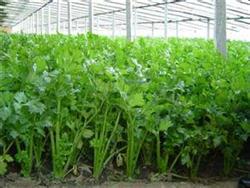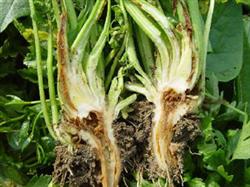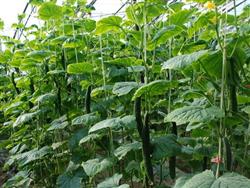How to keep the seed of conventional celery

In recent years, some excellent conventional varieties of celery have been cultivated in many places, which also account for a large proportion in planting. In view of the fact that celery is a cross-pollinated crop, conventional improved varieties should especially do a good job in seed retention and degradation prevention, establish a good seed field or seed base, and select good seed plants. No other celery varieties can be planted within at least 4000 meters of the reserved field. In general, special topography such as lake island, secluded land or forest belt are used as natural isolation shielding to establish breeding land or small area breeding base. There are two seed collection methods of celery: large plant seed collection method and small plant seed collection method. The large plant seed collection method is also called the adult plant seed collection method or the old root seed collection method. Before the harvest of commercial celery in winter, the excellent single plant which can represent the typical characteristics of this variety was selected as the remaining plant in autumn planting celery field. When a small number of seeds are retained, the selected excellent individual plants can also be transplanted to the reserved seed land, and the selected plants can be selected in early spring, that is, the plants that are early bolting, cold-tolerant and susceptible can be eliminated. Attention should be paid to watering and fertilizing after flowering. The flowering period of celery is long and the seed ripening period is different. In order to ensure the seed quality, it is best to harvest in stages and batches. Generally, per mu of reserved land can produce 75kg of seeds. When the large plant seed collection method is adopted, the commercial characters and cold tolerance of the plant can be selected, and the deterioration of the variety can be prevented in a certain procedure. Therefore, this method is more suitable for the purification and rejuvenation of local celery varieties. The small plant seed collection method sows and collects seeds in the same year, or cultivates seedlings before winter, and then sets them to plant and leave seeds in the next spring, then let them sprout, blossom and bear fruit, and then collect seeds. Although the cost of seed collection is small, the seed and plant can not be strictly selected, and it is easy to cause variety degradation when it is used year after year, so it is mostly used for breeding and production of excellent new varieties at the beginning of popularization. The method of collecting seeds from small plants is the key to grasp the appropriate sowing date. It is usually broadcast live in the open field around late February. If sowing is too late, the seedling can not pass the low temperature vernalization stage, and the seed plant can not smoothly bolt and blossom; but if sowing too early, the seedling is very small through the vernalization stage, bolting and flowering, the vegetative growth period is too short, and the accumulated nutrients are too little, resulting in low seed yield. When using the small plant seed collection method, because the plant is small and the branching ability of the seed plant is not strong after bolting, so the fixed value density is denser than that of the larger plant, usually the row spacing is 20 cm × 50 cm, and 2 plants are planted in each hole. Other cultivation and management techniques and seed harvesting methods are the same as those of large plants.
- Prev

Prevent celery heart rot in spring
Celery heart rot is a common physiological disease in celery production in spring. The tender tissue of celery grows black and dies. Subsequently, the celery root system and some stems and leaves also died one after another. The prevention and control methods are as follows: first, rational fertilization. Apply sufficient base fertilizer and increase phosphorus and potassium fertilizer and boron fertilizer to cultivate strong plants to improve disease resistance. No.
- Next

Fertilization techniques and facilities for planting autumn cucumber
Cucumber is a kind of high-yield vegetable with a long fruiting period and a shallow root crop, which needs to satisfy the nutrition of the growing period for a long time, so it should be fertilized by stages in time. Cucumber should grasp the principle of "frequent watering with small water and diligent application of thin fertilizer". Before cucumber planting, 2000 kg of high-quality organic fertilizer and 30 kg of phosphate fertilizer were applied per mu as base fertilizer. Huang.
Related
- Where is it suitable to grow horseradish in China? it is expected to see the middle altitude horseradish in Alishan.
- How to prevent tomato virus disease reasonably? (Control methods included)
- Many people like to plant towel gourd on the balcony. What are the main points of this method and management?
- What crops can chili peppers be mixed with?
- Fertilization techniques and matters needing attention in Tomato
- What are the grafting techniques for peach seedlings in spring?
- Harm and control methods of root swelling disease of Chinese cabbage
- What are the pests of sweet potatoes? How to prevent and cure it?
- Symptoms, causes and Control methods of navel Rot in Tomato
- The cause of "Cucumber rotten bibcock" in Farmers' planting Cucumber and its Control Plan

